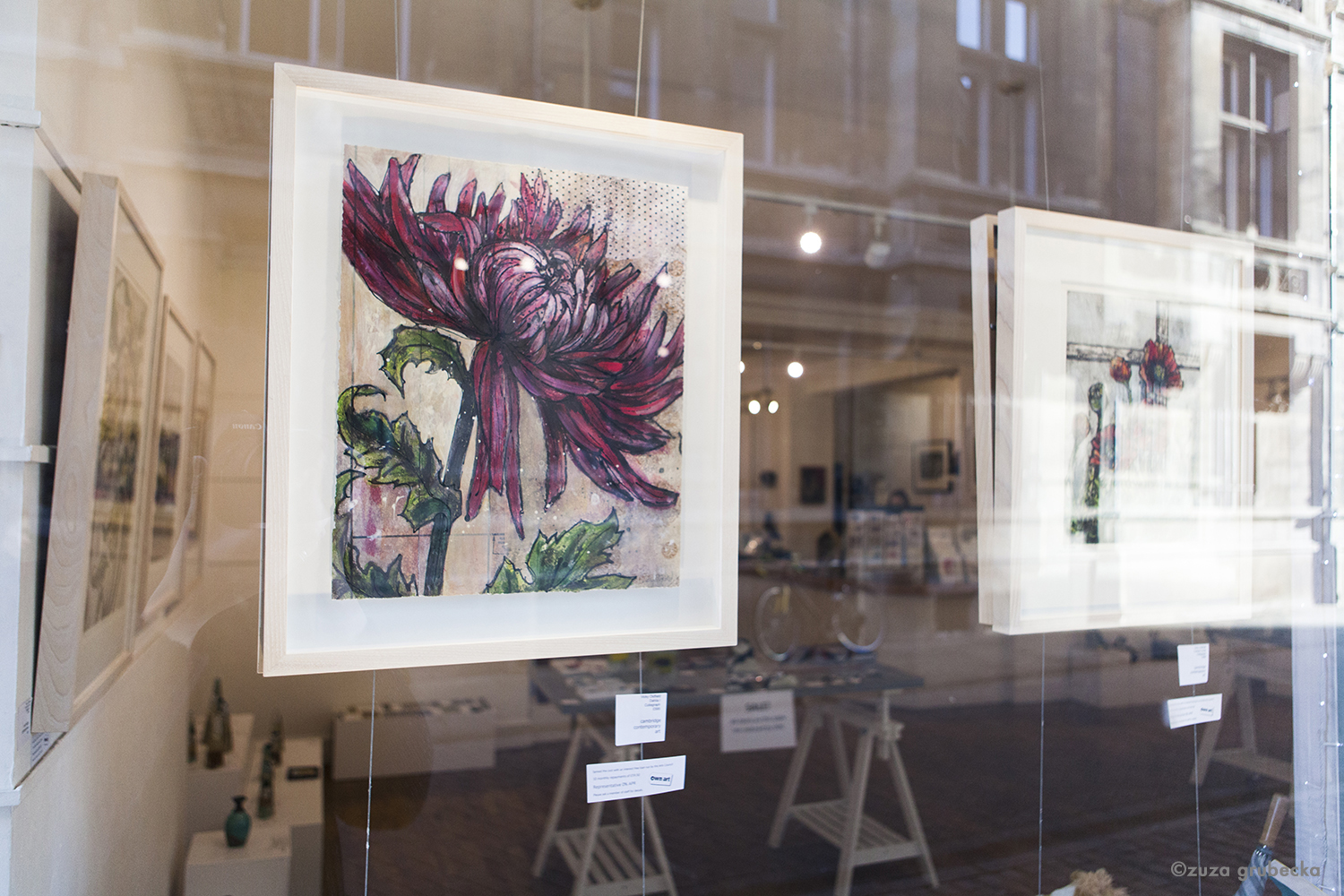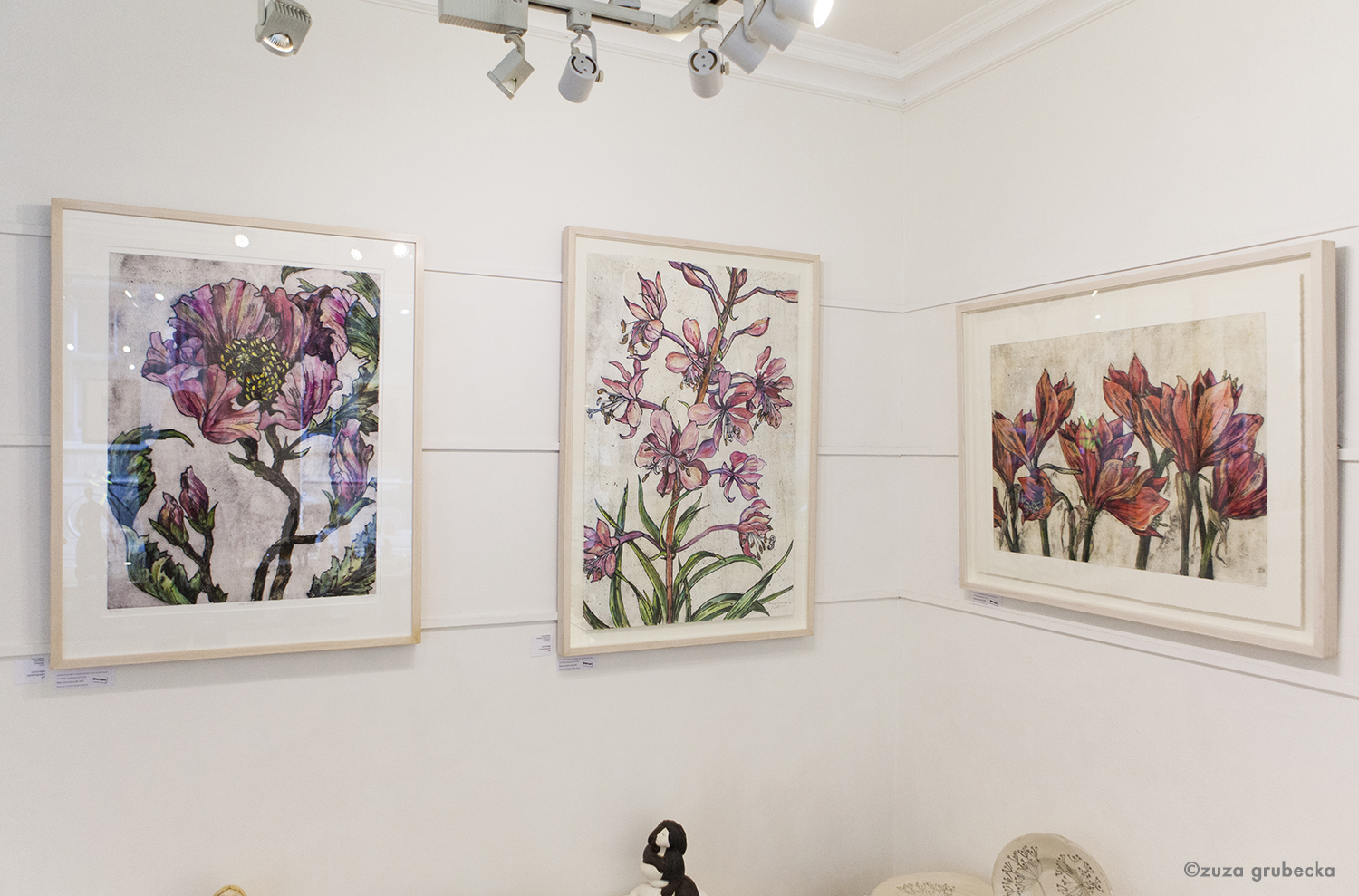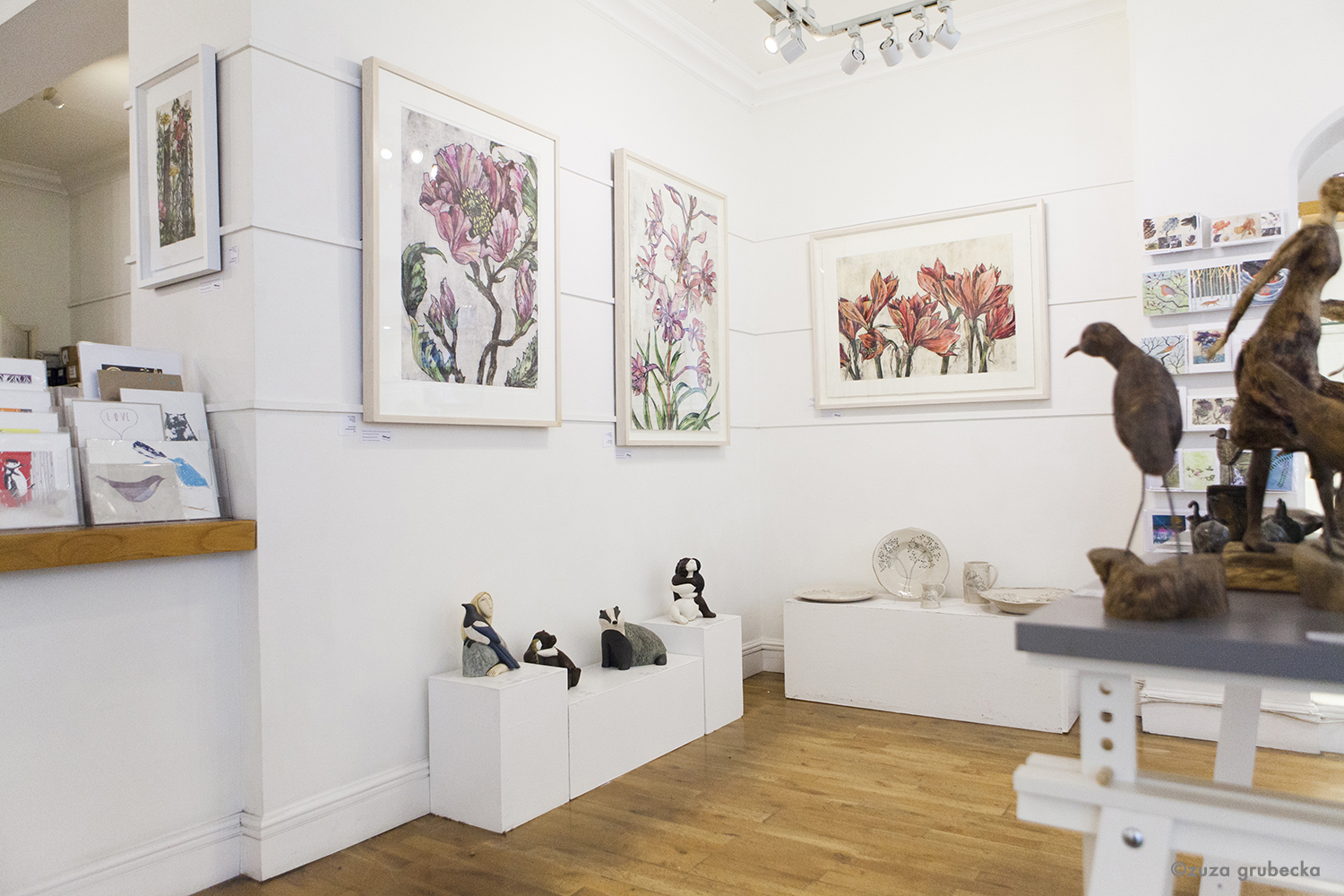We have started 2018 with a wonderful exhibition of Vicky Oldfield's collagraphs at the front of the gallery.
Her prints are taken from plates which have been collaged with a variety of materials, card, fabric, paper, string, sand and anything else that may come to hand; it's recycling at it's most creative! The plates are then sealed and then inked up and printed in intaglio or relief on damp paper using an etching press. The embossed textural quality of the print is unique to this method.
Thanks to the process itself, she is able to make small editions of the image, the editions are variable due to the process and her desire to experiment, which means each print is unique.
We asked Vicky some questions to find out more about her unique prints.
How did you get started with your art career?
I went to art college back in the eighties and studied design, I got my first job as a wallpaper designer for crown wallpapers and then worked for a design studio in Paris creating patterns for wallpapers, fabrics and ceramics. After a return to the UK I freelanced as a designer working on a variety of design projects from textiles, wallpaper and illustration to creating makes for craft magazines. During this time I began printmaking for pleasure, within a few years the printmaking became my main profession.
What inspires you?
I find inspiration everywhere, it's mainly from daily moments, I try to find time to slow down and really look. I start with a drawing and as soon as I am working I find the ideas flow, it's the starting that can sometimes be a problem, if I am stuck, I get in my studio look through my piles of ideas and sketches, try not to think too much and just start and then the ideas flow.
How do you go about making a new piece?
After starting with drawing and getting lots of ideas and sketches together, the final composition is put together in the same way that I used to design wallpaper, it's all about the textures, pattern, colours and space.
What are the qualities you enjoy about the medium you work in?
I love printmaking, it's a very versatile medium, so many opportunities for mark making! and when you have the plate made there are a lot of different ways you can print a picture from the same plate,which makes it fun and exciting. This does mean however that although my work is printed in editions there are huge variations within the editions, in some ways this is lovely as people get a unique piece, in other ways its complicated as my work is not a print in the traditional sense as an identical reproduction.
Which other artists do you admire?
I have huge admiration for Mary Fedden, Elizabeth Blackadder, Angie Lewin, John Piper, Barbra Rae, Stephen Chambers, Just to name a few!
Can you describe a typical working day?
Getting outside is good for the soul, I start the day with an hour long walk in the countryside with my dog, I live just where London hits the green belt, so after a short walk along the railway track I am in the countryside, I think my walks are my main source of inspiration. I tend to be working in my studio by 9.30, I will work all day if I am printing, with the process I use it's important to print as many as you can in one day as the prints get richer with each pull, but the actual plates start to change and can disintegrate, leaving me with only a portion of the intended edition printed.
If I am not printing, I am either preparing plates, planning artworks, painting up the pictures , all this mixed with the admin, gallery deliveries and visits to my framer
How do you see your work evolving in the future?
Through my artwork, I want to celebrate nature in all it’s beauty, I am planning on my walks to look to see where nature has reclaimed human spaces if only in a small way and to make works related to this.
Come and visit the gallery to see Vicky's prints on show at cambridge contemporary art, 6 Trinity Street, CB2 1SU from 2nd - 14th January 2018. The gallery is free to enter.
Photos of the gallery by Zuza Grubecka








